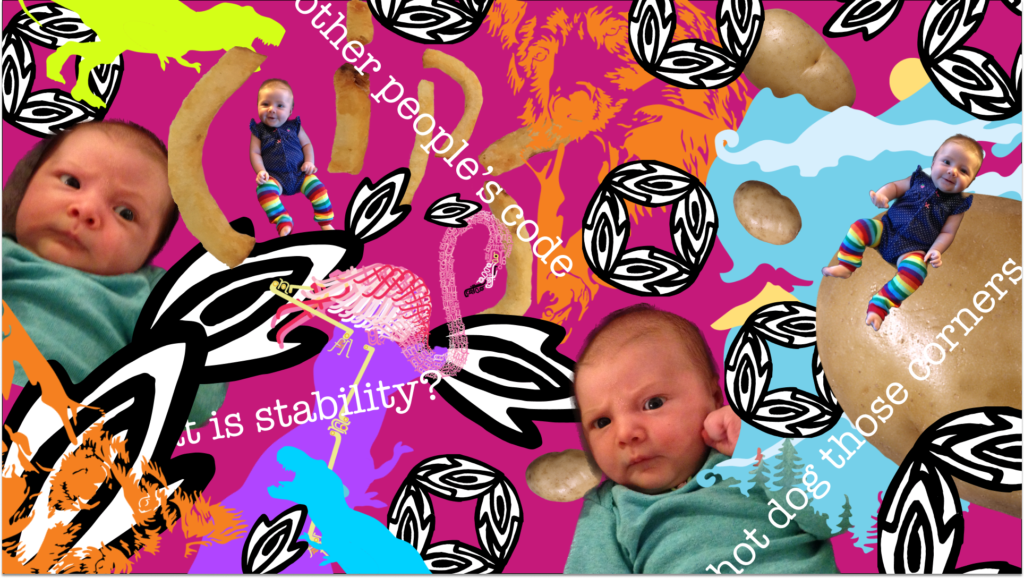This week’s post is inspired by Paolo Tossolini’s talk about his work with prototyping and emerging digital media and prototyping. He had a quirky personality and really championed his work style of taking risks and investing in new technology up front, which makes room for his own experimentation and learning, then using the outcome to market his prototypes to a client or business. Some products are successes and others fail to bring in income or take off in the market, but Tossolini finds value in learning from the process for all of them. His approach to prototyping is really based in a “mashup” philosophy, and his process begins with finding technologies that are new and novel to him and thinking of unique ways that they can be combined with each other or with other tech or particular locations to produce something new.
Inspired by this, here is my own little mashup:

To create this digital collage, I combined images that I created using Adobe Illustrator and hand-drawing on paper. Some of the images were originally intended to be still, and others were part of animations. I combined these with photographs and text. To put it all together, I used Figma, which is a program that will be needed for interactive media classes but that I haven’t used before, so this project was a little like a prototype for me. The images are mainly parts of work that I have done here at Seattle Central, and the text is just a few phrases from first quarter teachers, but I’ve also included pictures of my daughter whose arrival interrupted my work in the Graphic Design program a few years ago. I think that the biggest challenge for me was simply figuring out how to combine all of the elements that I wanted to use in a program that’s new to me. In retrospect, Figma might not be the most ideal program for collage-making, but I am glad that I tried it. By experimenting with placing the images, I got some beginning experience using some of the tools, and I feel a little more comfortable than I did with the interface. I can also see that I have a lot more to learn about how and when Figma might be most useful!